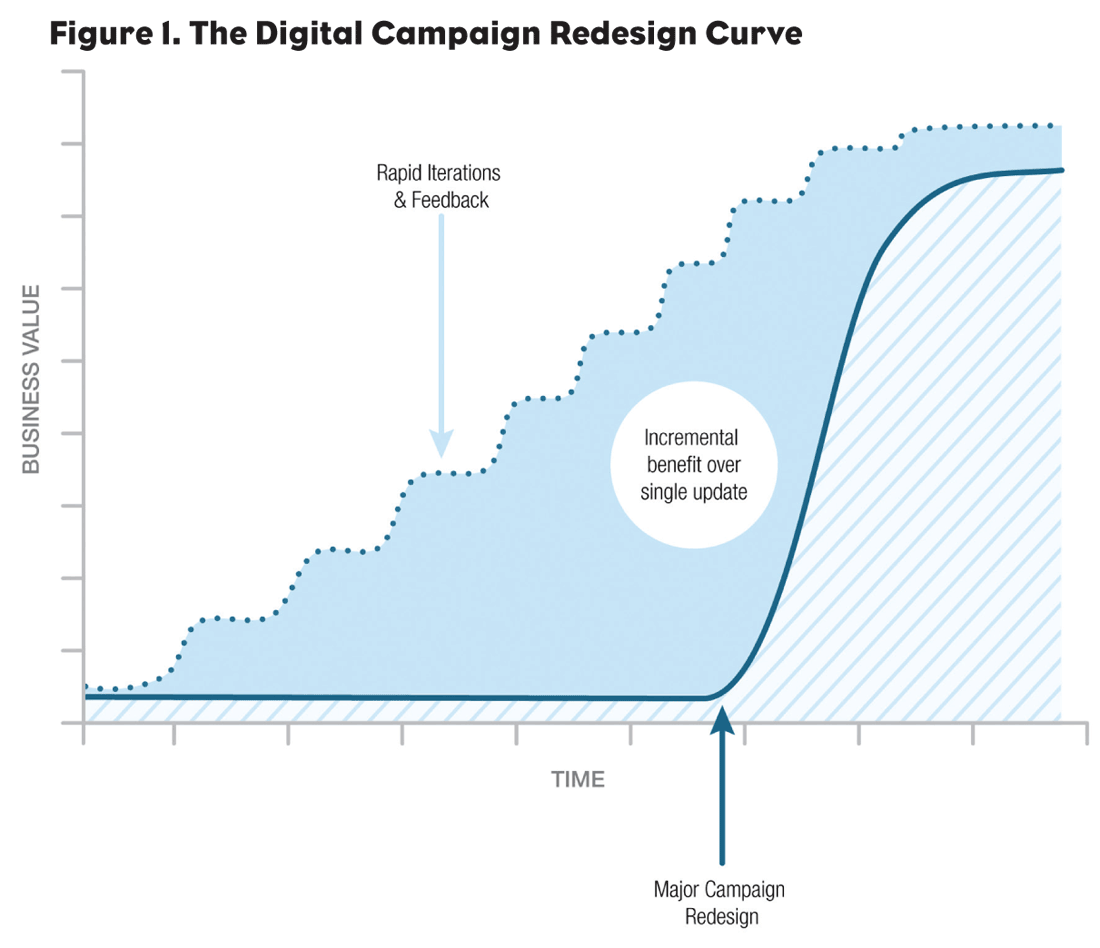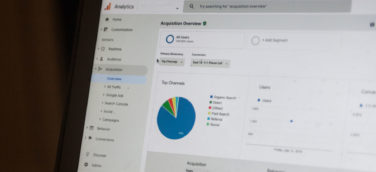I have seen it many times.
A new brand manager takes on the herculean effort to “revamp” their current digital campaign. Why? Digital budgets have been steadily increasing but senior management is failing to see a return. A major campaign redesign is in order. No stone is left unturned. Months of requirements gathering culminates in an ambitious plan to create an engaging, multi-audience, multi-channel online experience fed by a sophisticated digital media campaign that represents best-in-class digital marketing for the category. In 10 to 12 months, the campaign is launched to great fanfare. Sound familiar?
I’m an agency guy, so you probably are wondering why on earth I would have concerns with this story. Besides, words like “ambitious,” “best-in-class” and “sophisticated” probably translate into high budgets, right? While that may be the case, I would challenge the thinking that the best course of action from an external digital perspective is to “do nothing” for 10 to 12 months. Why do I say “do nothing?” While you’re building the next great thing, your current materials are still in-market so you look stagnant to your patients, HCPs and payers.
Alternatively, ask yourself, “What steps could I take in the next four to six weeks to optimize my current digital campaign and drive business results?” After all, the pharma business is all about maximizing business return in a finite period of time before patent expiration. Smaller, more frequent updates allow you to maximize the area under the curve (see Figure 1).
To that end, I challenge my team to think about our clients’ digital campaigns as continuous quality improvement (CQI) exercises. More importantly, I challenge them to be nimble, using any available data sources to make recommendations that can help drive results. While there is no doubt that campaigns may benefit from major updates, very often existing campaigns can continue to contribute to the business with small tweaks until a major update is ready for prime time. A tweak could be, but is not limited to:
- Changes/small additions to optimize the digital media campaign.
- Minor design changes to better highlight a campaign’s call-to-action.
- Removal of content from the website to simplify the experience.
- An addition of an exit survey to gather more data to inform future changes to the campaign.
Five considerations will help you to start thinking about your digital campaign as a CQI exercise rather than a monolithic campaign with fixed and infrequent milestones.
1. Think MVP—Minimum Viable Product. Taking a page from the software development field, think about the benefits of launching digital campaign optimizations quickly, rather than more comprehensive solutions that could take several months to execute. MVP is a term that describes a solution that meets an acceptable number of your campaign objectives and can be built in the shortest amount of time and in the most cost-effective manner. The benefits of launching an MVP solution include speed-to-market and customer responsiveness, cost and the opportunity to quickly optimize based on user feedback. Concerns or “watch-outs” include ensuring a quality brand experience that is consistent with other communications. One should not rush the development of a solution at the risk of a lackluster brand experience.
2. Let real data drive decision-making. Software developers depend on user feedback to optimize their product offering, and plan for this reality before the initial launch. In the pharma space, we too often rely on small-sample, traditional market research studies to create and refine our marketing offerings—including digital campaigns. Alternatively, focus on garnering feedback from the thousands of users who will interact with your campaign on a monthly basis.
This is the true testing ground. This is where your data and analytics partner can ensure that your campaign has the appropriate plan in place to measure and ultimately generate insights regarding campaign performance. Organize quarterly deep dives into the analytics and challenge your partners to bring insights and recommendations to the table rather than simply data-heavy reports.
3. Every change equals a “test and learn” opportunity. An appropriate mindset for any campaign optimization is let’s “test and learn” to see if this refinement translates into an improvement in our overall campaign key performance indicators (KPIs). For critical but specific refinements (such as changes to language around major calls-to-action), consider A/B or multivariate testing that will enable different versions to be tested in real-time. Work with your partners to ensure that a lightweight testing framework is included in all your projects going forward and this step becomes much easier over time.
4. Plan for future changes with a digital roadmap. Creating a digital roadmap serves multiple purposes. First, it outlines a clear picture of when you plan to make changes over the course of your planning cycle. Second, it outlines an initial list of feature/functionality updates that are planned for each milestone, keeping in mind that insights gleaned from the on-going “live” campaign should serve to validate, re-prioritize or suggest modifications not currently on your radar at all. Finally, the roadmap serves as an important communication tool within the organization to set expectations that a successful digital campaign anticipated to deliver business results will require ongoing optimization. And remember that the roadmap is what you’re going to do, not how you’re going to do it. The objectives here will be informed by all the feedback that your projects are gathering as you move forward.
5. Get Med/Reg/Legal on board. To become a more nimble organization that can frequently optimize digital campaigns based on market feedback, your whole MRL team needs to be on board. In many cases, new processes may need to be drafted to not only deal with the added frequency of submissions, but also to address new digital innovations that will maintain your differentiation in the marketplace. Involve your partners because they may have seen some best-in-class examples of MRL integration elsewhere and they can help you cross-pollinate these ideas where appropriate.






